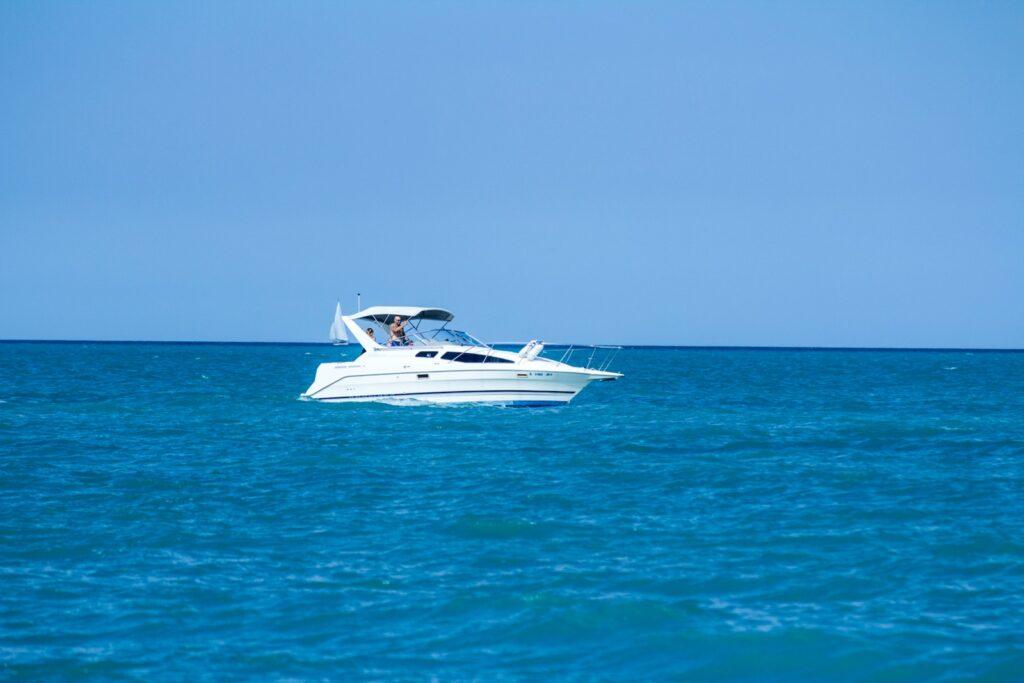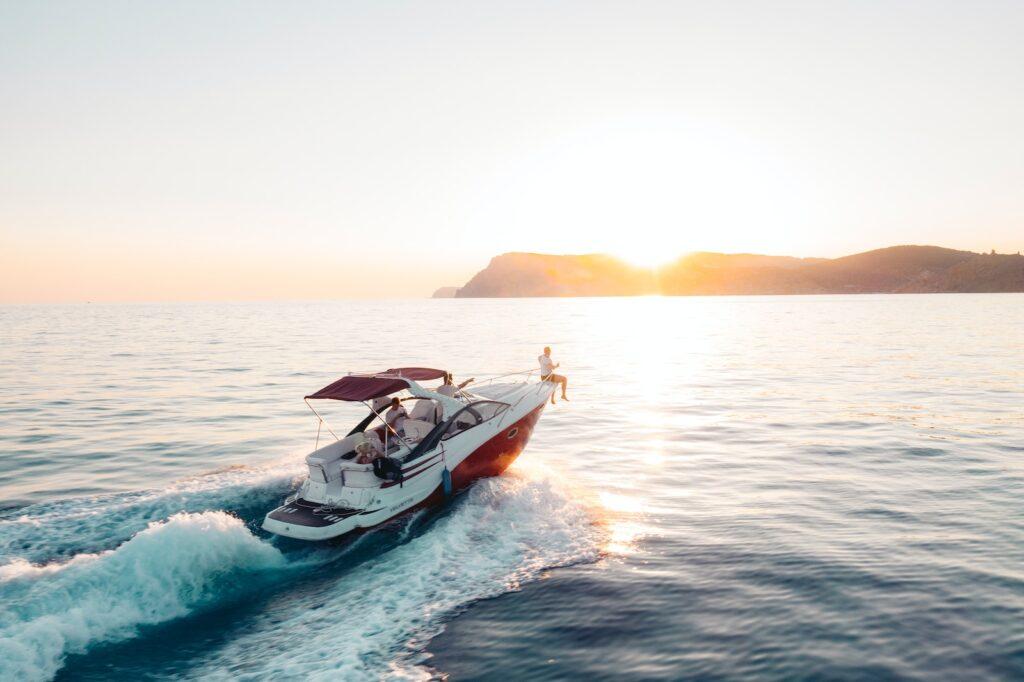What You Must Do When Anchoring at Night
Key Takeaways:
- Ensuring the boat is well-prepared for overnight anchoring involves choosing the appropriate anchor for the seabed type, using an adequate amount of anchor rode, checking the weather forecast, considering swing radius, and setting anchor alarms. You also need to check your vessel’s anchor light, secure loose gear, have personal flotation devices readily accessible, and respect other boaters by maintaining a safe distance.
- It’s not legal or safe to anchor a boat anywhere overnight. The choice of anchoring spot should offer good holding ground, protection from weather conditions, adequate depth, and should be free from navigational hazards. Regular monitoring of your anchor position and awareness of changing weather conditions are essential to maintain your boat’s safety.
- Having a clear communication plan with an established network and an emergency contact is vital during an overnight anchoring. Being alert and monitoring the weather, the boat’s position, and surroundings regularly can help ensure the safety of the vessel and the crew. You must also be vigilant about the vessel’s anchor and mooring line condition and position, adjusting as necessary.
Anchoring at night can be an exhilarating and peaceful experience, providing boaters with the opportunity to enjoy the tranquil beauty of the water under the stars. Anchoring in the dark requires extra caution and specific measures to ensure safety and a restful night’s sleep.
We will explore the essential steps and considerations for anchoring at night. Whether you’re a seasoned sailor or new to nighttime anchoring, understanding these guidelines will help you navigate the process with confidence and peace of mind.
What should be remembered when anchoring for an overnight stay?
When anchoring for an overnight stay, it is important to remember to check the forecast before setting out, as weather conditions can change quickly. Make sure to select a spot with a good holding ground and ample swing room, and double-check the anchor before going to bed.
- Anchor Choice and Setting: Ensure you have the appropriate anchor for the seabed type (sand, mud, or rock) and the size of your boat. Set the anchor securely by following the manufacturer’s recommendations and considering the wind and current conditions.
- Sufficient Scope: Use an adequate amount of anchor rode (line/chain combination) to provide enough scope. The general rule of thumb is a scope ratio of 7:1 or more, meaning the length of the rode should be seven times the depth of the water. This helps maintain a proper anchor angle and improves holding power.
- Weather Forecast: Check the weather forecast and be aware of any predicted changes in wind, tides, or weather conditions. Avoid anchoring in areas exposed to potential storms, strong winds, or adverse conditions.
- Swing Radius: Consider the swing radius of your boat when anchored. Take into account factors such as wind, tides, and other vessels in the vicinity to ensure you have sufficient space for your boat to swing without coming into contact with any hazards.
- Setting Anchor Alarms: Utilize anchor alarms, either through dedicated devices or smartphone apps, to alert you if your boat begins to drift or the anchor is not holding properly. This helps you stay aware of any changes in position and take appropriate action.
- Proper Lighting: Ensure your boat has proper lighting for overnight anchoring. Display an anchor light that complies with regulations to indicate your vessel’s presence and prevent collisions with other boats.
- Monitoring Anchor Position: Regularly monitor your anchor position and surroundings to ensure the anchor is holding securely and there are no changes in conditions or nearby hazards that may affect your boat’s safety.
- Be Considerate of Others: Respect other boaters and nearby vessels by anchoring at a reasonable distance from them. Avoid blocking navigational channels or areas designated for other activities.
- Safety Precautions: Take safety precautions before going to sleep, such as securing loose gear, closing hatches, and having personal floatation devices (PFDs) readily accessible.
Be aware of other boats in the area and keep an eye out for any potential hazards.
What must you do when anchoring at night with lights
When anchoring at night with lights, you should ensure that your anchor light is prominently displayed and is visible from a distance. The anchor light should be placed in a location that will be easily seen by other vessels so they can avoid you. The anchor light should be on at all times your vessel is anchored.
Can you anchor a boat anywhere overnight
No, you cannot anchor a boat anywhere overnight. You must check with the local authorities to determine the areas where you can safely and legally anchor your boat overnight. Generally, many bodies of water have designated areas where you can anchor your boat overnight, but it’s important to check the local laws and regulations before doing so.

Prepare Your Vessel
Preparing your boat for anchoring at night is crucial to ensure a safe and secure experience on the water. Here are some essential steps to follow:
- Choose a Suitable Anchorage: Select a suitable anchorage that provides good holding ground, protection from wind and waves, and adequate depth for your boat’s draft. Consult nautical charts, cruising guides, or local knowledge to identify safe and recommended anchoring locations.
- Check Anchor and Rode: Inspect your anchor and rode (anchor line or chain) for any signs of wear, damage, or corrosion. Ensure that the anchor is securely attached to the boat and that the rode is in good condition without any fraying or weak spots.
- Estimate Swing Radius: Consider the expected wind and current conditions to estimate the swing radius of your boat when at anchor. Allow enough space between your boat and any nearby obstacles, including other vessels, shorelines, or navigational hazards.
- Set the Anchor Properly: Lower the anchor slowly and steadily from the bow of your boat. Allow the anchor to reach the bottom and then reverse your boat’s propulsion to set the anchor firmly into the seabed. Pay attention to the anchor chain or rode tension to ensure a secure hold.
- Use Sufficient Scope: Calculate the appropriate scope for your anchor, which refers to the ratio of anchor rode length to water depth. A general rule of thumb is to use a scope of 7:1 (seven times the water depth) for a reliable hold. Adjust the scope as needed based on conditions and the type of anchor you’re using.
- Monitor Position and Drag: Keep a close eye on your boat’s position using visual references, GPS, or anchor watch apps. Periodically check for any signs of anchor drag, such as significant changes in position or excessive rode tension. If you suspect anchor drag, consider re-anchoring or taking other necessary actions to ensure your boat’s safety.
- Activate Anchor Lights: Use proper anchor lights to make your boat visible to other vessels at night. Display an all-around white anchor light at a visible height to meet navigational regulations and help prevent collisions.
Make sure your vessel is properly prepared for the night. This includes checking the anchor, making sure you have the appropriate safety equipment, and ensuring your navigation lights are functioning properly.
Check the Anchor
The most important thing you can do to prepare your vessel for anchoring at night is to check the anchor. Make sure the anchor is in good condition and that it’s securely attached to the vessel.
Have Safety Equipment Onboard
It’s important to have all the necessary safety equipment on board when anchoring at night. This includes personal flotation devices, a fire extinguisher, a first aid kit, and a signal flare.
Before you start anchoring at night, check to make sure your navigation lights are functioning properly. This will ensure other vessels can see you and know where you are.
Choose the Right Spot

Look for a sheltered location that provides protection from wind, waves, and currents. Avoid areas exposed to strong winds or open water where waves can build up. Seek out natural barriers like cliffs, islands, or other boats that can offer additional protection.
Ensure that the water depth is sufficient for your boat’s draft, taking into account the tide variations if applicable. Check nautical charts or use depth sounders to determine the depth of the area and make sure it provides enough clearance for your boat.
Look for areas with good holding ground where your anchor can dig in and maintain a solid grip. Sand, clay, or mud bottoms generally provide better holding than rocky or grassy areas. Avoid locations with excessive weeds or loose debris that can interfere with the anchor’s ability to set and hold.
Consider the strength and direction of currents and tides in the area. Anchoring in a spot where there is minimal current or where the tidal range is not extreme will help ensure a more stable position for your boat throughout the night.
When choosing the spot to anchor your vessel, there are several things to consider. Make sure you’re in a safe spot that’s away from other vessels, shallow areas, and any obstacles. If You are going to stay on the lake check anchor for lakes.
Choose a Safe Spot
The most important thing to consider when choosing a spot to anchor is safety. Make sure you’re in a spot that’s away from other vessels, shallow areas, and any obstacles.
Check the Weather Forecast
Before you anchor, it’s important to check the weather forecast. This will help you determine if the spot you’ve chosen is suitable for anchoring.
Monitor the Tide and Wind
When you’re anchoring at night, it’s important to monitor the tide and wind. This will help you determine if the spot you’ve chosen is suitable for anchoring.
Use a Mooring Line
When anchoring at night, it’s important to use a mooring line in addition to the anchor. This will help to secure the vessel with best boat hooks. in case the anchor fails or the wind shifts.
Attach the Mooring Line to the Anchor
The mooring line should be attached to the anchor at one end and to the vessel at the other. This will help to secure the vessel in case the anchor fails or the wind shifts.
Secure the Mooring Line to the Vessel
When attaching the mooring line to the vessel, make sure it’s securely fastened. This will help to ensure the vessel stays in place in case the anchor fails or the wind shifts.
Monitor the Mooring Line
Once the mooring line is attached to the vessel, it’s important to monitor it. Make sure it’s not causing any issues, such as chafing, or becoming tangled.
Monitor the Anchor

Once you’ve anchored your vessel, it’s important to monitor the anchor to make sure it’s staying in place. This is especially important when anchoring at night, as the anchor may move due to changes in wind and tide.
Check the Anchor Periodically
It’s important to check the anchor periodically throughout the night. This will help to ensure the anchor is staying in place and the vessel is secure.
Monitor the Wind and Tide
When you’re anchoring at night, it’s important to monitor the wind and tide. If the wind and tide change, the anchor may move and the vessel may become loose.
Adjust the Anchor Position if Necessary
If the wind and tide change, it may be necessary to adjust the anchor position. This will help to ensure the vessel stays secure and in place.
Use a Stern Anchor
When anchoring at night, it’s a good idea to use a stern anchor in addition to the bow anchor. This will help to ensure the vessel stays in place in case the wind shifts.
Attach the Stern Anchor to the Vessel
The stern anchor should be attached to the vessel at one end and to the anchor at the other. This will help to ensure the vessel stays in place in case the wind shifts.
Secure the Stern Anchor to the Vessel
When attaching the stern anchor to the vessel, make sure it’s securely fastened. This will help to ensure the vessel stays in place in case the wind shifts.
Monitor the Stern Anchor
Once the stern anchor is attached to the vessel, it’s important to monitor it. Make sure it’s not causing any issues, such as chafing, or becoming tangled.
Use a Night Light
Before anchoring, ensure you have a reliable and waterproof night light specifically designed for marine use. Verify that the light’s batteries are charged or replace them if needed.
Locate a suitable spot on your boat’s bow or mast to mount the night light. Choose a position that provides maximum visibility while ensuring it doesn’t obstruct navigation or create glare for the helmsman.
Once you’re ready to anchor, turn on the night light. Most lights have a switch or button for easy activation. Make sure the light emits a steady, consistent beam and is visible from all directions.
Position the light in a way that it illuminates the anchor and surrounding area. This helps you monitor the anchor’s position and detect any potential hazards nearby. Ensure the light’s beam reaches the water surface, allowing other boaters to identify your anchored vessel.
Some night lights offer adjustable brightness settings. Depending on the conditions, you can modify the intensity to suit your needs. Brighter settings may be necessary in areas with limited ambient light, while dimmer settings may be more suitable in well-lit environments.
If you or your crew need to maintain night vision, such as when using navigational instruments, consider using a red or green filter on the night light. These colors have a minimal impact on night vision and help preserve your ability to see in the dark.
Choose the Right Night Light
When choosing a night light for your vessel, make sure it’s the right type for your boat. There are various types of night lights, so make sure you choose one that’s suitable for your vessel.
Install the Night Light Properly
Once you’ve chosen the right night light, make sure it’s installed properly. This will help to ensure the light is working correctly and is visible to other vessels.
Monitor the Night Light
Once the night light is installed, it’s important to monitor it. Make sure it’s working correctly and is visible to other vessels.
Have a Communication Plan
When anchoring at night, it’s a good idea to have a communication plan in place. This will help to ensure the safety of your vessel and crew in case of an emergency.
Establish a Communication Network
When anchoring at night, it’s important to establish a communication network. This can include a radio, a cell phone, or a satellite phone.
Establish an Emergency Contact
When anchoring at night, it’s important to have an emergency contact. This should be someone who can be contacted in case of an emergency.
Monitor the Communication Network
Once the communication network is established, it’s important to monitor it. Make sure the network is working properly and that it’s easily accessible in case of an emergency.
Stay Alert
When anchoring at night, it’s important to stay alert and aware of your surroundings. This will help to ensure the safety of your vessel and crew.
Monitor the Weather
When anchoring at night, it’s important to monitor the weather. This will help to ensure the safety of your vessel and crew in case of sudden changes in weather.
Monitor the Vessel’s Position
When anchoring at night, it’s important to monitor the vessel’s position. This will help to ensure the safety of your vessel and crew in case the anchor fails or the wind shifts.
Monitor the Surroundings
When anchoring at night, it’s important to monitor the surroundings. This will help to ensure the safety of your vessel and crew in case of unexpected hazards.
Anchoring at night can be a daunting task, but with the right preparation and knowledge, you can make sure your vessel and crew are well protected. By following the steps outlined above, you’ll be able to ensure the safety of your vessel and crew when anchoring at night.
FAQs
What safety precautions should I take when anchoring at night?
When anchoring at night, several safety precautions should be followed. Ensure your boat’s navigation lights are functioning correctly to signal your presence to other boaters. Use a reliable night light to illuminate the anchor and surrounding area for better visibility. Regularly monitor your anchor’s position and the weather conditions to ensure a secure hold. It’s also crucial to maintain a proper lookout and be aware of other vessels in the vicinity.
Are there any legal requirements for anchoring at night?
Legal requirements for anchoring at night can vary depending on the jurisdiction and local regulations. It is essential to familiarize yourself with the specific laws and guidelines of the area you are boating in. Complying with the rules for displaying navigation lights, using a visible anchor light, and following any specific anchoring restrictions or designated areas are common legal requirements.
What must I do to prevent accidents or collisions while anchored at night?
To prevent accidents or collisions while anchored at night, take several precautions. Maintain a proper anchor watch by having a designated person on board to monitor your surroundings and alert the crew of any approaching vessels or hazards. Keep your navigation lights and anchor light on and visible at all times. Sound an appropriate horn or signal to warn other vessels of your presence. It is crucial to be vigilant, use common sense, and follow safe boating practices to avoid accidents while anchored at night.
